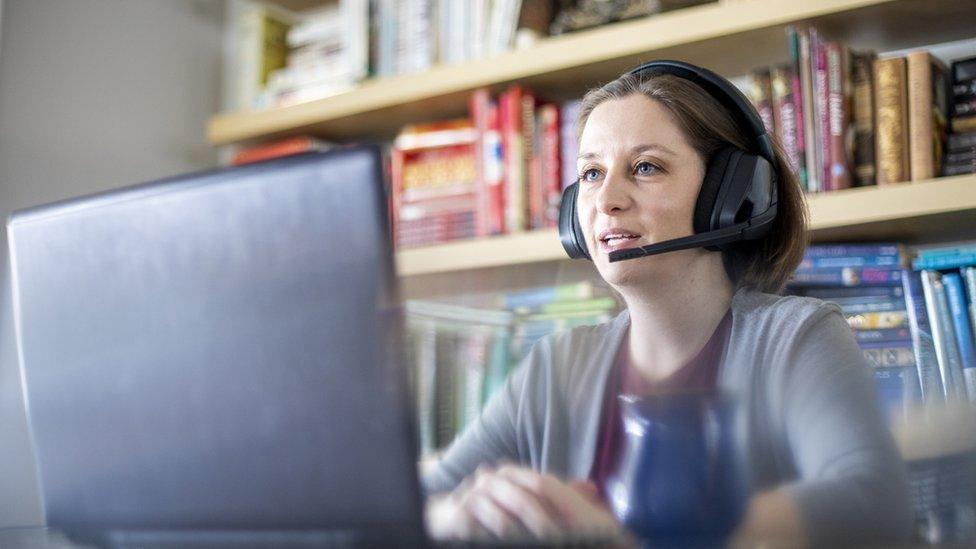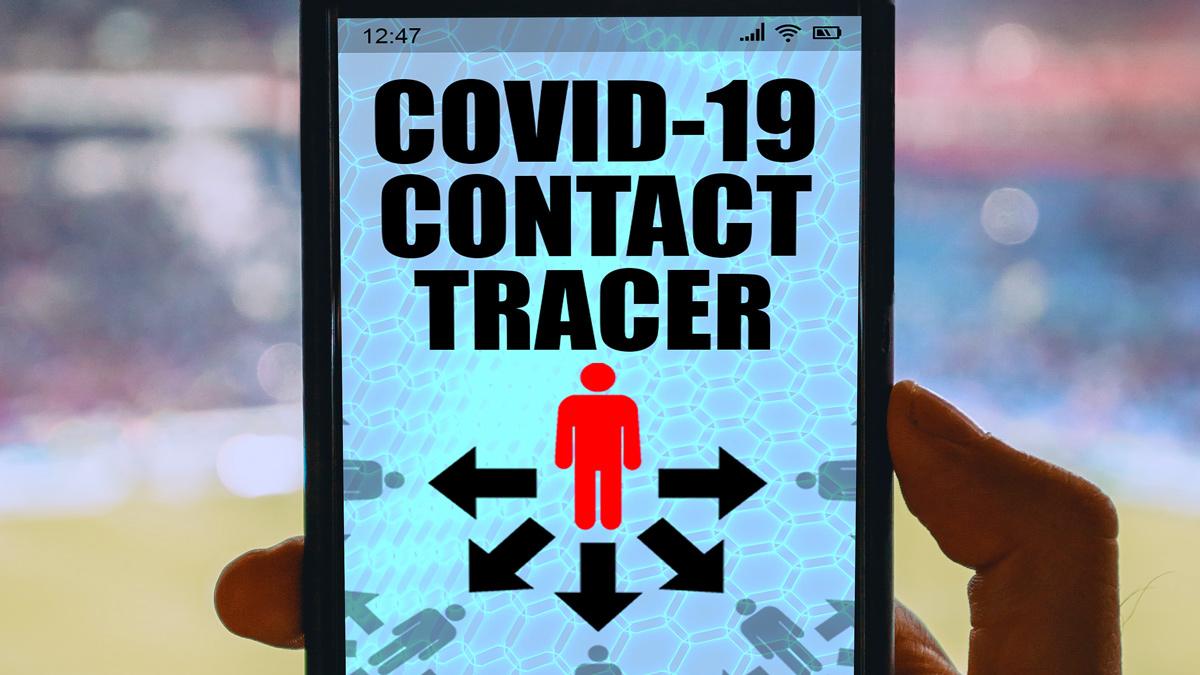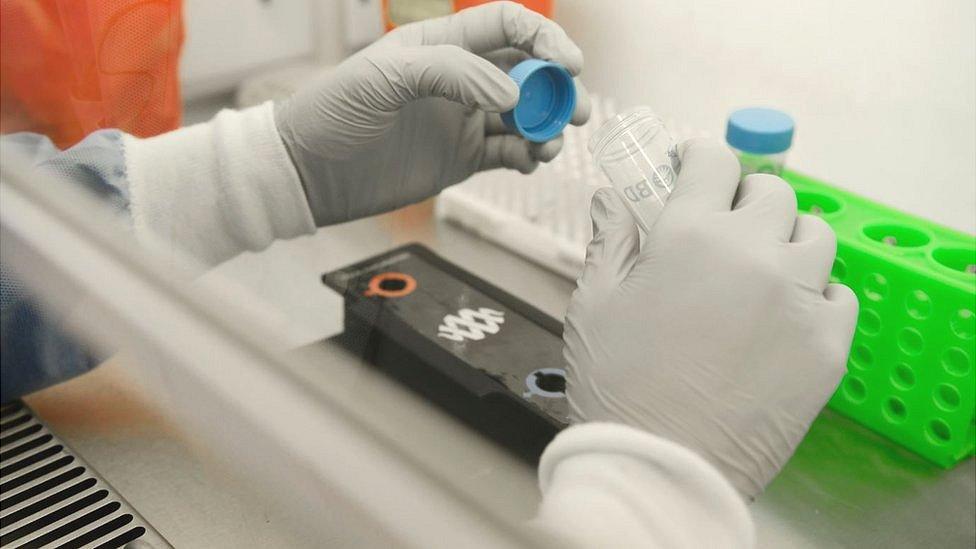Coronavirus: Physical contact tracing for NI rather than app
- Published
- comments

The health minister says telephone contact tracing is proving effective in NI
Northern Ireland will concentrate on a physical contact tracing scheme for Covid-19, rather than an app, according to the chief scientific adviser.
Prof Ian Young said the usefulness of an app has been overstated, because of the 50% of people who used it, only 25% of contacts would be traced.
"At best, it is an adjunct," he told MLAs on Stormont's health committee.
NI was the first of the four UK administrations to roll out a contact tracing programme.
Health Minister Robin Swann said that because the app relies on Bluetooth being on, it can drain the phone battery and the indications are that makes it "unattractive for the public".
Mr Swann added someone at the end of a phone was proving effective when it comes to coronavirus contact tracing in Northern Ireland.
Latest figures
It comes as a further eight Covid-19 related deaths have been recorded by Northern Ireland's Department of Health, bringing its total to 534.
Two of the deaths happened in the past 24 hours; six others happened earlier but have only now been added to the department's toll.
The department's daily figures are mostly comprised of hospital deaths and where a patient had previously tested positive for the virus.
The latest figures on the department's dashboard show a further eight confirmed positive cases of the virus, bringing that total to 4,740.
On Wednesday, the health committee was told Northern Ireland's 'Test, Trace and Protect' programme is capable of tracing at least 300 positive cases of the virus a day, each with up to 10 contacts.
Mr Swann said there are currently 102 contact tracers, with recruitment for the posts closing on Wednesday.
Tracers are on a one-year contract with an option to extend to two years.
There are two levels of recruitment, including nurses and environmental health staff who are able to offer advice and guidance beyond self-isolating with symptoms.
'Certainly potential' for another outbreak
Prof Young told MLAs that if he was given "a magic wand and infinite testing, I would test everybody in the population every day".
The chief scientific adviser said the possibility of more widespread testing in higher risk settings was also being considered, with the added goal of getting test results returned within 24 hours, rather than 48.
According to Prof Young, the current rate of transmission of the virus - the R number - is sitting between 0.8 and 1.0, and it will now be published once a week, on either Thursday night or Friday.
He also said there is "certainly potential" for another outbreak of Covid-19 in Northern Ireland until there was "substantial immunity" amongst the population.
He said 70% to 80% immunity would be required for that, but the current level is probably about 5%.
However, he said with the current lockdown and social distancing measures in place, he hoped another outbreak would not be as severe as to overwhelm the health system.
Case numbers higher in well-off areas
Meanwhile, the health minister also confirmed that there are more positive cases of coronavirus in more affluent areas of Northern Ireland than in deprived areas.
Mr Swann said the Public Health Agency has carried out research into the prevalence of cases in Northern Ireland.
What is contact tracing?
Contact tracing aims to identify and alert people who have come into contact with a person infected with coronavirus.
It is a crucial component of the "test, trace and isolate" strategy, credited with helping to lift restrictions in other countries.
Someone who has been infected is asked to list all the people they've recently been in prolonged contact with.
Those people will then be tracked down by phone, before potentially being asked to self-isolate for 14 days and, in some cases, offered a test for the virus.
- Published27 October 2020

- Published1 June 2020
